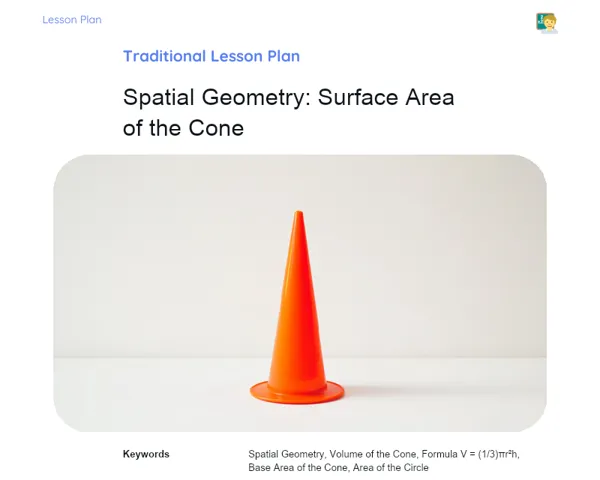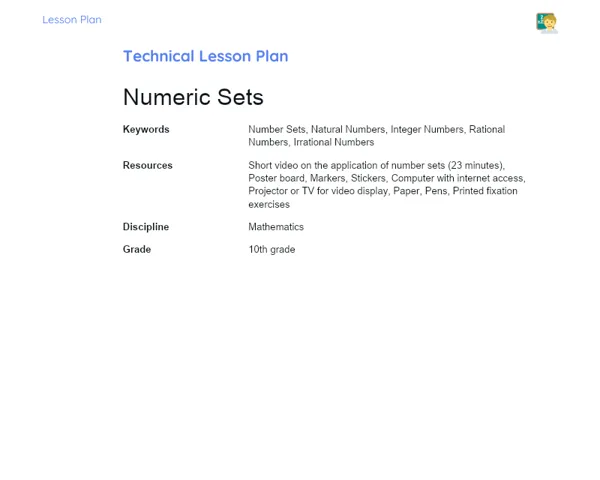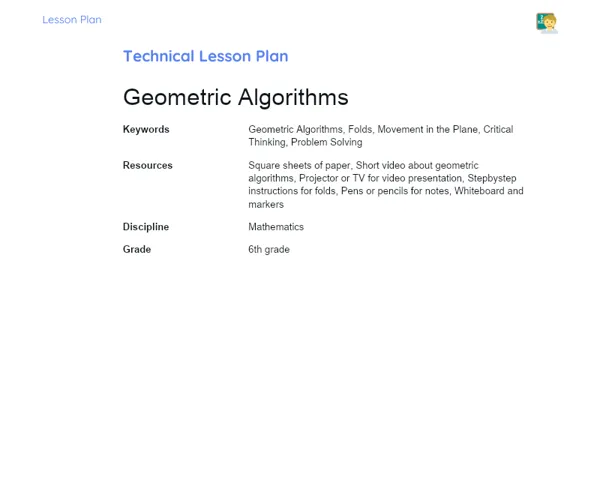Lesson Plan | Lesson Plan Tradisional | Hexagon Area
| Keywords | Regular Hexagon, Area Calculation, Mathematical Formula, Equilateral Triangles, Geometry, Practical Applications, Problem Solving, Bee Hives, Architecture, Biology |
| Resources | Whiteboard or chalkboard, Markers or chalk, Images of regular hexagons, Calculators, Notebooks for notes, Projector (optional), Presentation slides (optional) |
Objectives
Duration: (10 - 15 minutes)
The aim of this stage is to introduce the main objectives of the lesson to the learners, making them aware of the significance of the topic and the skills they will acquire by the end of the lesson. This helps guide their focus and sets their expectations for the content that will be covered.
Objectives Utama:
1. Explain the concept of the area of a regular hexagon and how to calculate it.
2. Show how calculating the area of hexagons can be applied to real-world problems.
Introduction
Duration: (10 - 15 minutes)
The purpose of this stage is to introduce the topic engagingly and contextually, sparking learners' interest and preparing them for what they will learn. Providing a relatable context and intriguing facts related to the lesson will foster greater engagement and motivation to study the area of hexagons.
Did you know?
Did you know that bee hives are shaped like hexagons? This design is ideal because hexagons create a strong and efficient structure while using less wax and maximising honey storage space. It’s a fantastic example of how geometry is part of nature and useful in our daily lives.
Contextualization
To kick off the lesson on the area of a regular hexagon, explain to the learners that a hexagon is a shape with six equal sides. Emphasise that regular hexagons have unique properties that simplify area calculation. Use a diagram of a regular hexagon to aid visualisation. Inform them that today's focus will be on how to calculate the area of this shape and applying this knowledge in practical contexts.
Concepts
Duration: (50 - 60 minutes)
In this segment, the aim is to provide a thorough, step-by-step breakdown of calculating the area of a regular hexagon, ensuring learners grasp the concept and can apply it in real-life situations. This structured approach supports understanding and prepares learners for solving related problems on their own.
Relevant Topics
1. Understanding Regular Hexagons
2. Formula to Calculate Area of a Regular Hexagon
3. Practical Uses for Area Calculation of Hexagons
To Reinforce Learning
1. Calculate the area of a regular hexagon with a side length of 8 cm.
2. If six equilateral triangles create a hexagon, and each triangle has an area of 12 cm², what is the total area of the hexagon?
3. A hexagon-shaped room has each side measuring 5 meters. What is the total area of the room?
Feedback
Duration: (15 - 20 minutes)
This stage aims to reinforce and solidify learners' understanding of the lesson by discussing the solutions to the problems provided. Engaging the learners with questions and reflections fosters a collaborative learning environment and encourages practical application of the concepts learned.
Diskusi Concepts
1. Go through solutions for questions from the Development stage: 2. Question: Calculate the area of a regular hexagon with a side of 8 cm. 3. Solution: For this, we use the formula: A = (3√3/2) * L², where L is the side length. 4. Calculation: A = (3√3/2) * 8² = (3√3/2) * 64 = 96√3 cm². 5. Question: If six equilateral triangles form a hexagon, and the area of each triangle is 12 cm², what is the total area of the hexagon? 6. Solution: Total area of the hexagon is the sum of the areas of the six triangles. 7. Calculation: Total area = 6 * 12 = 72 cm². 8. Question: For a hexagon-shaped room with each side being 5 meters, how do you find the total area? 9. Solution: We apply the hexagon area formula: A = (3√3/2) * L². 10. Calculation: A = (3√3/2) * 5² = (3√3/2) * 25 = 37.5√3 m².
Engaging Students
1. Question: Why is it important to know the area of a hexagon in real life? List some examples. 2. Reflection: How might the geometry of hexagons be relevant in other fields, like architecture or biology? 3. Question: What is the total area of 30 hexagonal bee cells, each with a side of 1 cm? 4. Reflection: If you were designing a hexagon-shaped floor for a room, how would properties of the hexagon affect your material and design choices?
Conclusion
Duration: (10 - 15 minutes)
The aim of this stage is to recap and reinforce the main ideas covered during the lesson, ensuring learners retain a clear and thorough understanding of the content. By bridging theory to practice and demonstrating how relevant the topic is, learners are better prepared to utilise this knowledge in real situations.
Summary
['Understanding the properties of a regular hexagon.', 'Formula for calculating the area of a regular hexagon: A = (3√3/2) * L².', 'Practical examples in calculating hexagon areas.', 'How area calculations of hexagons apply to real-world problems.']
Connection
This lesson connected theory with practice through visual examples and exercises that explain how to find the area of a regular hexagon. Real-world scenarios, such as determining the area of a hexagonal room, were introduced to highlight the practical applications of this knowledge.
Theme Relevance
Learning how to calculate the area of a hexagon is crucial for numerous everyday tasks, including floor design, building bee hives, and in fields like architecture and biology. The geometry of hexagons combines efficiency with aesthetics, making it a popular choice in various disciplines.



